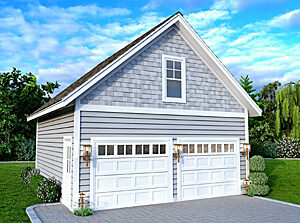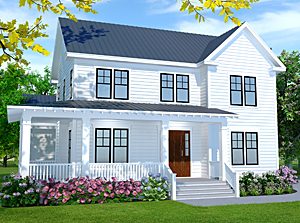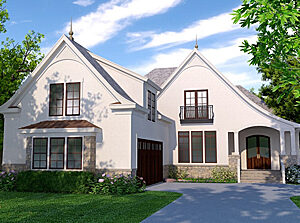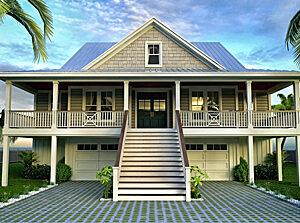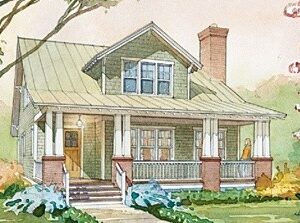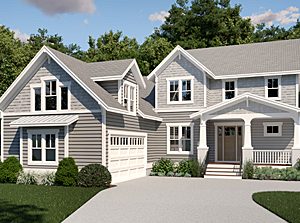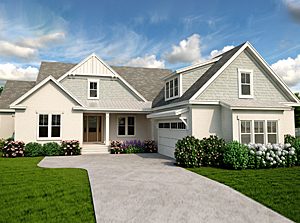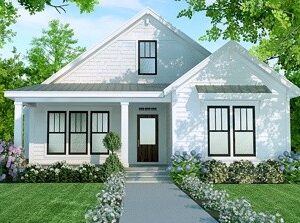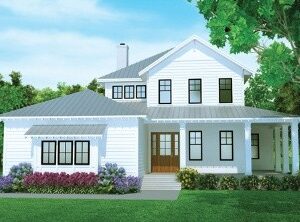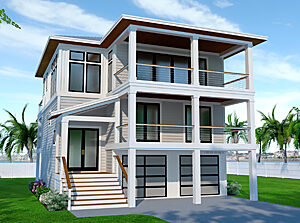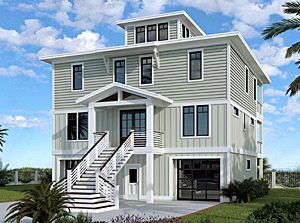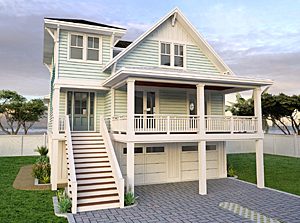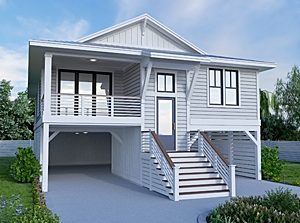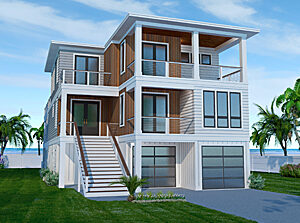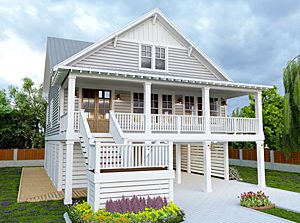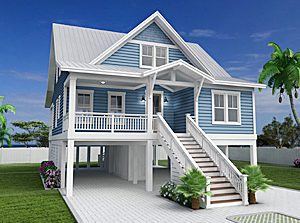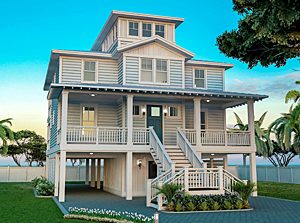Picture this–you’re leafing through house plans, entranced by a quaint cottage-style house with charming dormer windows and stone walls. Then, your eyes wander to an open-floor bungalow with large windows and a sloping roof.
Both are appealing, but which one is right for you?
Cottages and bungalows are two popular home styles that each have their own features and benefits. So, what’s the difference between cottages and bungalows, and how can you decide between them? We have your guide to cottage vs. bungalow designs here!
What is the Difference Between a Cottage and a Bungalow?
The primary difference between cottages and bungalows lies in their architectural styles and origins. Cottages, typically found in rural areas, are small, picturesque houses often made from natural materials like stone or wood, and usually feature a cozy, traditional design.
Bungalows, on the other hand, are single-story homes that originated from the Bengal region, known for their low-pitched roofs and functional layouts, often including features like a large porch or veranda. While both provide a homely atmosphere, they differ significantly in design and cultural connotations.
Distinguishing Between Cottages and Bungalows
When it comes to house plans, the terms “cottage” and “bungalow” are often used interchangeably. However, these architectural styles have distinct characteristics that set them apart.
The Allure of Cottage Living
There’s a unique charm that comes with living in a cottage. The layout and smaller footprint of cottage floorplans allow for ample views of nature with lower maintenance. Cottage living isn’t just about experiencing the coziness and warmth of gathering spaces and nature; it’s about experiencing tranquility.
The Evolution of Cottage Architecture
Original cottages were small houses built for rural workers in the English countryside. They had high-pitched roofs, thick walls for insulation against cold weather, and small windows to control temperature.
In contrast, modern-day cottages have evolved considerably. They now boast larger floor plans designed around open-concept living spaces, which often include loft areas–ideal spots for an extra bedroom, kids’ playroom, studio, or home office.
As such, you’ll typically see a lot of variation between cottage-style home designs, making this one architectural style that’s easy to customize and make your own.
Cottages aren’t merely structures; they are symbols reflecting the perfect blend between practicality and aesthetics, proving that you don’t need sprawling square footage to live comfortably or stylishly.
Designing your own cottage, complete with personalized touches like painted red wood facades or stone walkways, is truly an opportunity to create something timeless where each detail echoes your taste.
Embracing the Bungalow Lifestyle
The bungalow lifestyle is all about comfort and convenience. Modern bungalows have adopted features seen in farmhouse designs, such as large porches for relaxation.
The Benefits and Practicality of Bungalow Architecture
Bungalows first appeared in India but quickly spread to other regions due to their practical design. These homes were typically built at least two feet above ground level, providing additional protection from flooding.
The compact yet spacious single-story layout of bungalows makes living easier by eliminating staircases that can pose challenges for those with mobility issues or small children, making it a practical design for people of all ages and capabilities.
A key attribute of a bungalow-style house plan is its accessibility. All living areas reside on one floor, making them perfect choices for families, seniors, or those unable to use stairs.
In addition to being functional, they also promote ventilation since warm air rises naturally without the obstruction of multiple floors.
Comparing Cottages and Bungalows
Both cottage and bungalow-style homes have unique features that set them apart. Let’s compare the two architectural styles here so you can get a better idea of which one is right for you.
The Similarities Between Cottages and Bungalows
Cottages and bungalows share some common characteristics. They both offer cozy living spaces designed to maximize comfort with a compact floor plan. Additionally, modern bungalow and cottage designs typically feature large windows for ample natural light.
Beyond aesthetics, these houses are also often used as vacation homes due to their small size and functional design, with plenty of spaces for gathering. This trend makes them great options for those seeking a holiday retreat or a second home.
The Differences That Set Them Apart
While cottages usually exhibit steep gabled roofs adorned with dormer windows, bungalows typically showcase sloping roofs built into their structure–an iconic element of this architectural style.
Another difference between these styles is that cottages usually find their place in peaceful rural areas, offering breathtaking views of nature. In contrast, bungalows tend to be located in urban settings and are generally used as permanent residences.
Choosing Between a Cottage or Bungalow
Deciding between a cottage and a bungalow is an exciting part of your home-building journey. Both styles have unique charms but also have their own considerations.
The Role of Location Climate in Your Choice
Your location’s climate plays a significant role when choosing between these two types of houses.
For example, cottages are perfect for rural areas and are often used as vacation homes due to their cozy atmosphere and rustic charm. They were also traditionally built for climates with harsh winters to retain heat, making them an excellent choice for a home in the mountains or colder regions.
On the other hand, bungalows typically feature open floor plans, making them great options for warm climates because they allow air to circulate freely through all living spaces. They are also traditionally built a few feet off the ground, making them ideal for beach homes or river or lake retreats where there’s a risk of flooding.
Find Your Perfect Design With SDC House Plans
Whether you’re dreaming of a rustic cottage or a stylish, modern bungalow, SDC House Plans has the perfect design waiting for you. Let us help you choose the best style for your next home, whether you’re looking to build a vacation home or your primary residence!



